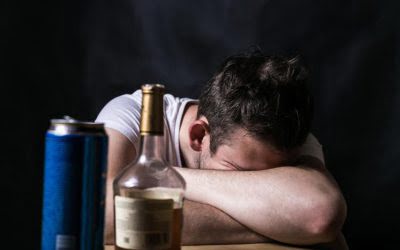LivaTone Plus supports phase 1 and phase 2 detoxification pathways, ensuring optimum detoxification of many toxic substances and also supports liver function and metabolism. There are many resources available to the alcoholic to help him or her achieve a successful sobriety. They have adhered to the program they were first introduced to when they commenced counselling. Hundreds of thousands of people die every year and their death certificate states “Heart Attack” or “Blood Pressure” or “Cancer” as cause of death, when in actual fact, it was alcohol. Family members do not want the word “alcohol” as the cause of death of their loved ones.
- Key daily habits hold the potential to foster dopamine homeostasis by balancing moments of effort, pain, and reward.
- We then describe evidence-based treatments you can recommend to patients to help the brain, and the patient as a whole, to recover.
- However, this same mechanism can also contribute to the development of addictive behaviors.
- This damage can lead to a decrease in overall dopamine levels, resulting in symptoms like depression and difficulty experiencing pleasure from other activities.
- While alcohol metabolism in the brain is dominated by catalase, the microsomal enzyme cytochrome P450 also can convert ethanol to acetaldehyde (Zakhari, 2006).
1.2. Clinical evidence for the use of dopamine D2 antagonists for the treatment of alcohol dependence
There is a belief among researchers that replacement of dopamine may be used to help people with addiction disorders. It is a chemical, however, that does not easily pass through the blood-brain barrier. Consequently, it’s unlikely that any potential treatment option that’s designed to increase dopamine uptake will be as simple as swallowing a pill loaded with the chemical. Research into how to take advantage of the chemical balance in the brain is ongoing, but it’s not currently close to yielding a feasible solution for those who are coping with alcoholism. These changes in the striatum contribute to the development of alcohol use disorders. They make it difficult for individuals to control their drinking behaviors, even in the face of negative consequences.
Stick With It, Even When It’s Boring
Second, dopamine can modulate the efficacy with which electrical impulses generated in dopaminergic or nondopaminergic neurons result in neurotransmitter release from the Drug rehabilitation nerve terminals of these signal-emitting (i.e., pre-synaptic) cells. This presynaptic influence is part of the tonic-nonsynaptic mode of dopaminergic signal transmission. Studies on stress in rodent models have compared dopamine cell firing in control animals and in subjects that were exposed to different stressors, such as mild food restriction (chronic or acute)and brief cold swim.

Cerebellum and Balance Control
In support are the data showing that local administration of cabergoline into the VTA reduced alcohol‐seeking behaviour in rats 170. These data are contradictory to the findings showing that the dopamine D2 receptor antagonist into the anterior VTA did not alter alcohol intake in high‐alcohol‐preferring rats 142. Therefore, mechanisms regulating alcohol reinforcement might be different in selectively breed high alcohol‐consuming rats compared to outbreed rats, and this should be investigated in more detail. It should also be mentioned that infusion of the dopamine D1‐like agonist SKF into NAc had no effect on alcohol self‐administration in rats 141. Albeit the data are somewhat contradictory, it might be hypothesized that accumbal as well as ventral tegmental dopamine D2 receptors may regulate alcohol reinforcement in rodents. Dopamine D2 receptor antagonists have been studied in human laboratory studies involving alcohol administration in dependent individuals and found to be effective in reducing craving.

Too much pleasure can lead to addiction. How to break the cycle and find balance
Over time, dopamine production decreases once your tolerance goes up, meaning you may need more alcohol to feel the same boost over time. During acute and protracted withdrawal, a profound negative emotional alcohol and dopamine state evolves, termed hyperkatifeia (hyper-kuh-TEE-fee-uh). The brain mediates our motivation to repeat behaviors that lead to pleasurable, rewarding states or reduce uncomfortable, distressing physical or emotional states. In this context, drinking alcohol can be motivated by its ability to provide both relief from aversive states and reward. These dual, powerful reinforcing effects help explain why some people drink and why some people use alcohol to excess.
